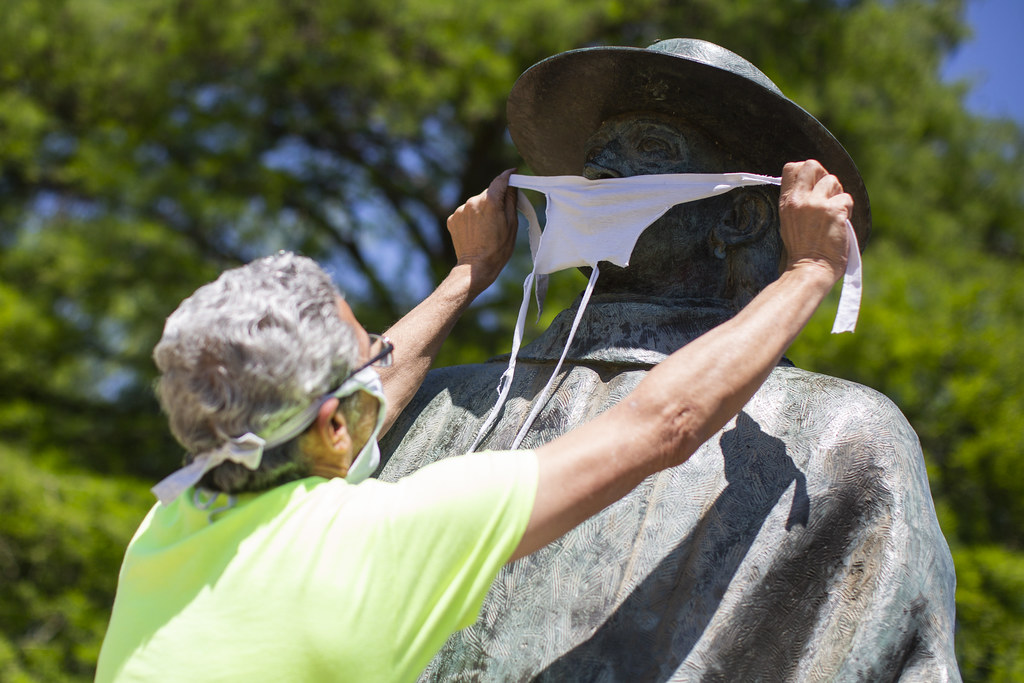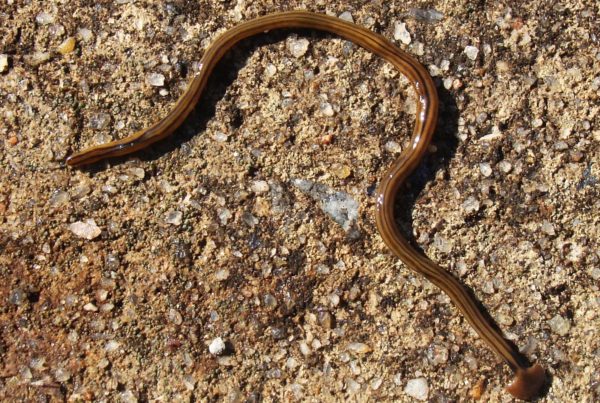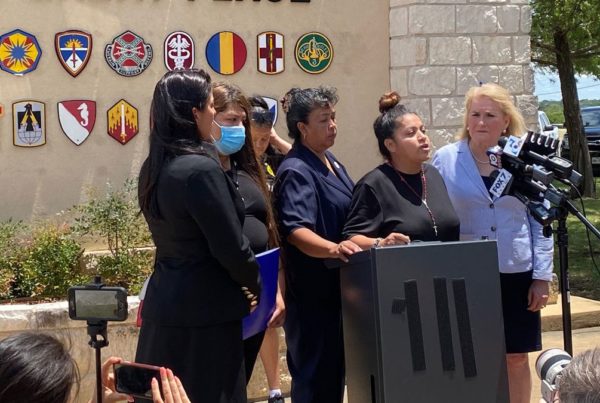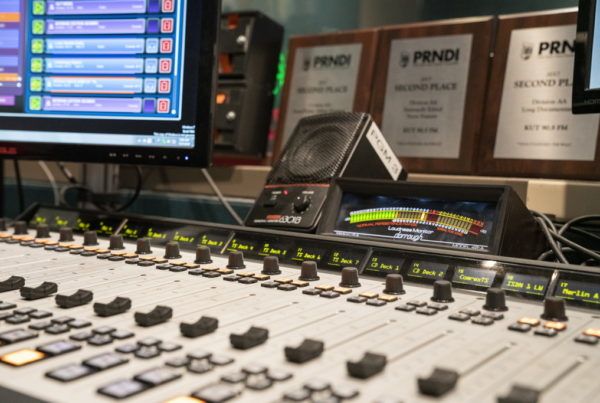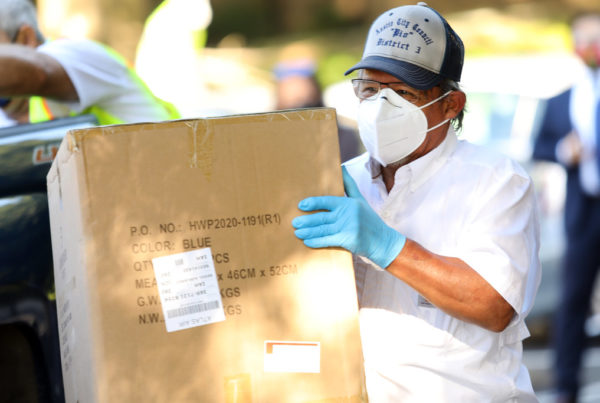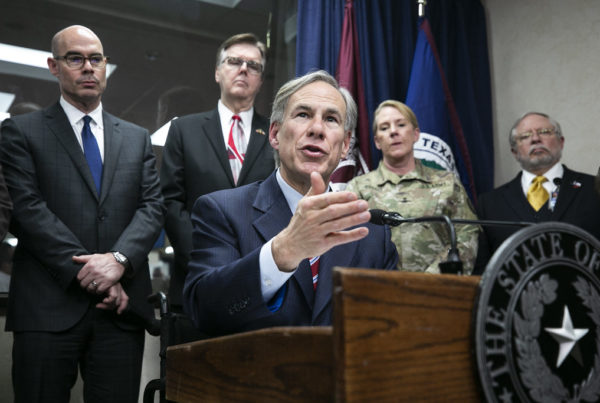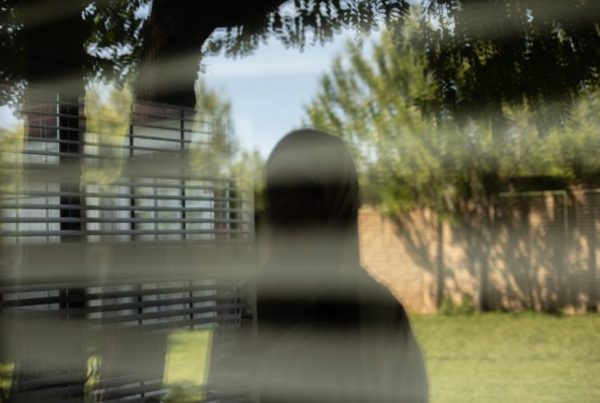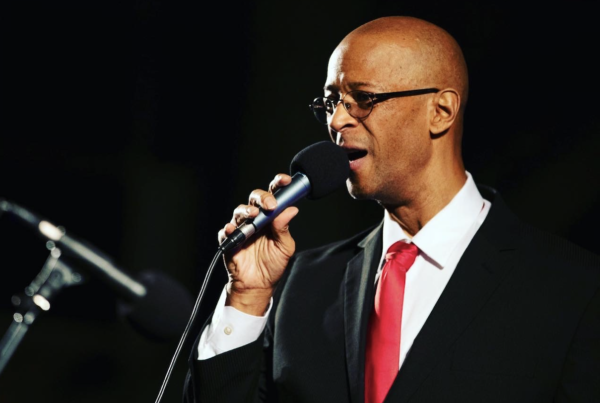Texas Gov. Greg Abbott is urging Texans to wear face masks to prevent the spread of COVID-19, though he stopped short of mandating masks statewide. But there are tricks to using a mask properly so that it protects your health and the health of others.
Dr. Elizabeth Matsui is a physician and epidemiologist at UT Austin’s Dell Medical School. She recently made a video to dispel some myths about protective masks, and talked about her tips, and some COVID-19 basics, with Texas Standard host David Brown on Tuesday.
How does the new cornavirus spread?
It often spreads through airborne particles.
“The virus is in airborne particles that people breathe out or emit when they’re talking and shouting,” Matsui said. “Those airborne particles can remain in the air for a long time. … Someone who’s susceptible to the infection who then breathes in those airborne particles can get infected in that way.“
Wearing a cloth mask can help stop this spread.
“It provides some protection from you getting infected,” Dr. Matsui explained. “It helps to reduce the number of viral particles that you emit into the air that other people can breathe in.”
But she said masks are most effective when everyone is wearing one.
“That’s the most potent way to really decrease transmission of the virus,” she said.
Face-Mask Myths
Myth #1: Masks aren’t necessary
False: Masks are critically important in this time when we don’t have good treatments or a vaccine available.
Myth #2: I don’t need a face covering if I don’t have COVID-19 symptoms
False: People who are infected but don’t have symptoms are still able to spread the virus. And those people are responsible for a significant amount of virus spread. Face masks protect us from people who don’t know that they’re sick.
Myth #3: Social distancing is unnecessary if I’m wearing a mask
False: A mask does provide some protection, but it’s not perfect. So if you’re wearing a mask and are in close proximity to someone, you are still at risk of being exposed to airborne particles from their coughs, sneezes or talking. We really need to do both things: wear mask and practice social distancing.
Other Tips:
The mask should cover your nose:
“It’s really important to actually have your nose covered because you are exhaling particles through your nose, but you’re also inhaling particles through your nose,” Matsui said.
How to wear a mask while eating or drinking at bars and restaurants:
“If you must, my recommendation is to actually pick an outdoor location where there’s not much crowding in terms of mask-wearing. The more of the time that you’re there, that you can wear a mask, the better that is in terms of reducing the potential spread of virus or your potential for catching the virus,” Matsui said. “[But] my recommendation is not to go to indoor spaces where there are many people gathered.”
Keep your mask on as much as possible:
“If you’re taking your mask on and off to eat or drink, that limits its effectiveness.”


